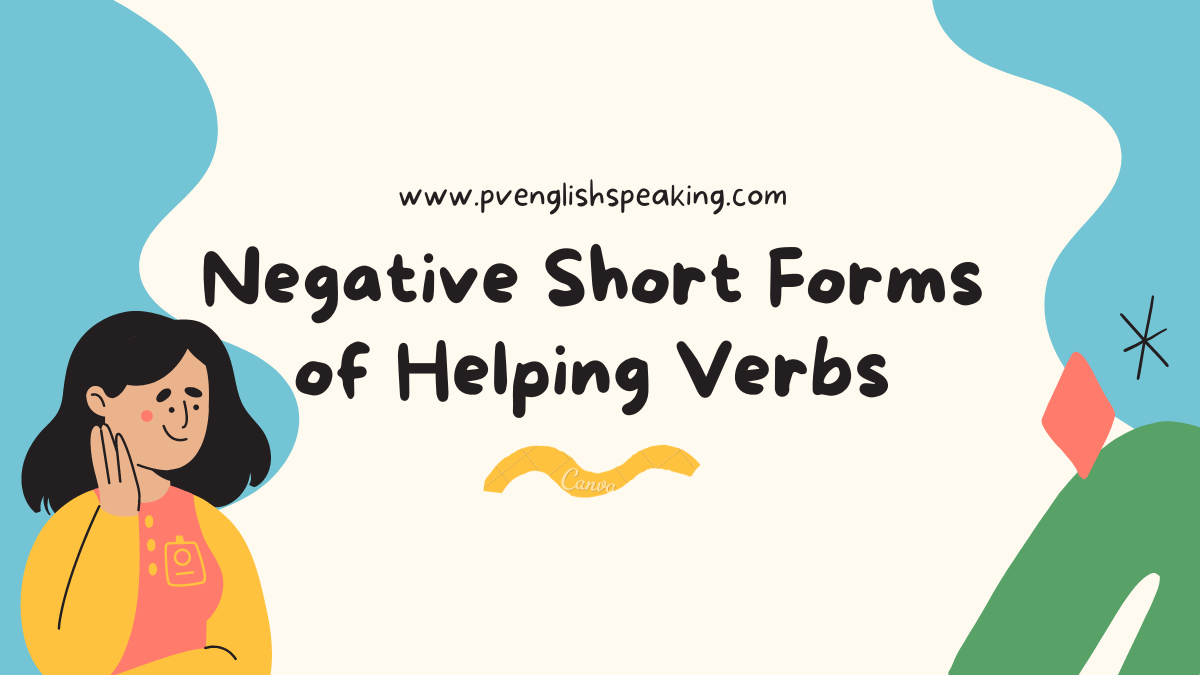Exploring Negative Short Forms of English Helping Verbs
Exploring Negative Short Forms of English Helping Verbs
In English grammar, helping verbs (also known as auxiliary verbs) play a crucial role in forming various tenses, moods, and voices. One aspect of these verbs that often confuses learners is their negative short forms. These contractions are commonly used in everyday speech and writing, making them essential to master for fluency.
What Are Helping Verbs?
Helping verbs assist the main verb in a sentence. The primary helping verbs include “be,” “have,” and “do,” along with modals such as “can,” “could,” “will,” “would,” “should,” and “must.”
Negative Short Forms
Negative short forms, or contractions, combine the helping verb with “not” to create a shorter, more informal expression. Here’s a look at how these contractions work:
| Helping verbs | Short for ms | उच्चारण | British Pronunciation | American Pronunciation |
| am not | ain’t | ए न्ट | /eɪnt/ | /eɪnt/ |
| Is not | isn’t | इज़न्ट | /ɪz.ənt/ | /ɪz.ənt/ |
| Are not | aren’t | आन्ट | /ɑːnt/ | /ɑːrnt/ |
| Will not | won’t | वोन्ट | /wəʊnt/ | /woʊnt/ |
| Have not | haven’t | हैवन्ट | /hæv.ənt/ | /hæv.ənt/ |
| Has not | hasn’t | हैज़न्ट | /hæz.ənt/ | /hæz.ənt/ |
| Did not | didn’t | डिडन्ट | /dɪd.ənt/ | /dɪd.ənt/ |
| Was not | wasn’t | वॉज़न्ट | /wɒz.ənt/ | /wɒz.ənt/ |
| Were not | weren’t | व न्ट | /wɜːnt/ | /wɜːnt/ |
| Must not | mustn’t | मस् न्ट | /mʌs.ənt/ | /mʌs.ənt/ |
| Had not | hadn’t | हैडन्ट | /hæd.ənt/ | /hæd.ənt/ |
| Can not | can’t | कान्ट | /kɑːnt/ | /kænt/ |
| Could not | couldn’t | कुडन्ट | /kʊd.ənt/ | /kʊd.ənt/ |
| Should not | shouldn’t | शुडन्ट | /ʃʊd.ənt/ | /ʃʊd.ənt/ |
| Would not | wouldn’t | वुडन्ट | /wʊd.ənt/ | /wʊd.ənt/ |
Conclusion
Understanding and using the negative short forms of helping verbs is key to mastering English fluency. These contractions are prevalent in both spoken and written language, making your communication more natural and efficient. By familiarizing yourself with these forms, you’ll enhance your ability to express negative statements clearly and effectively.


